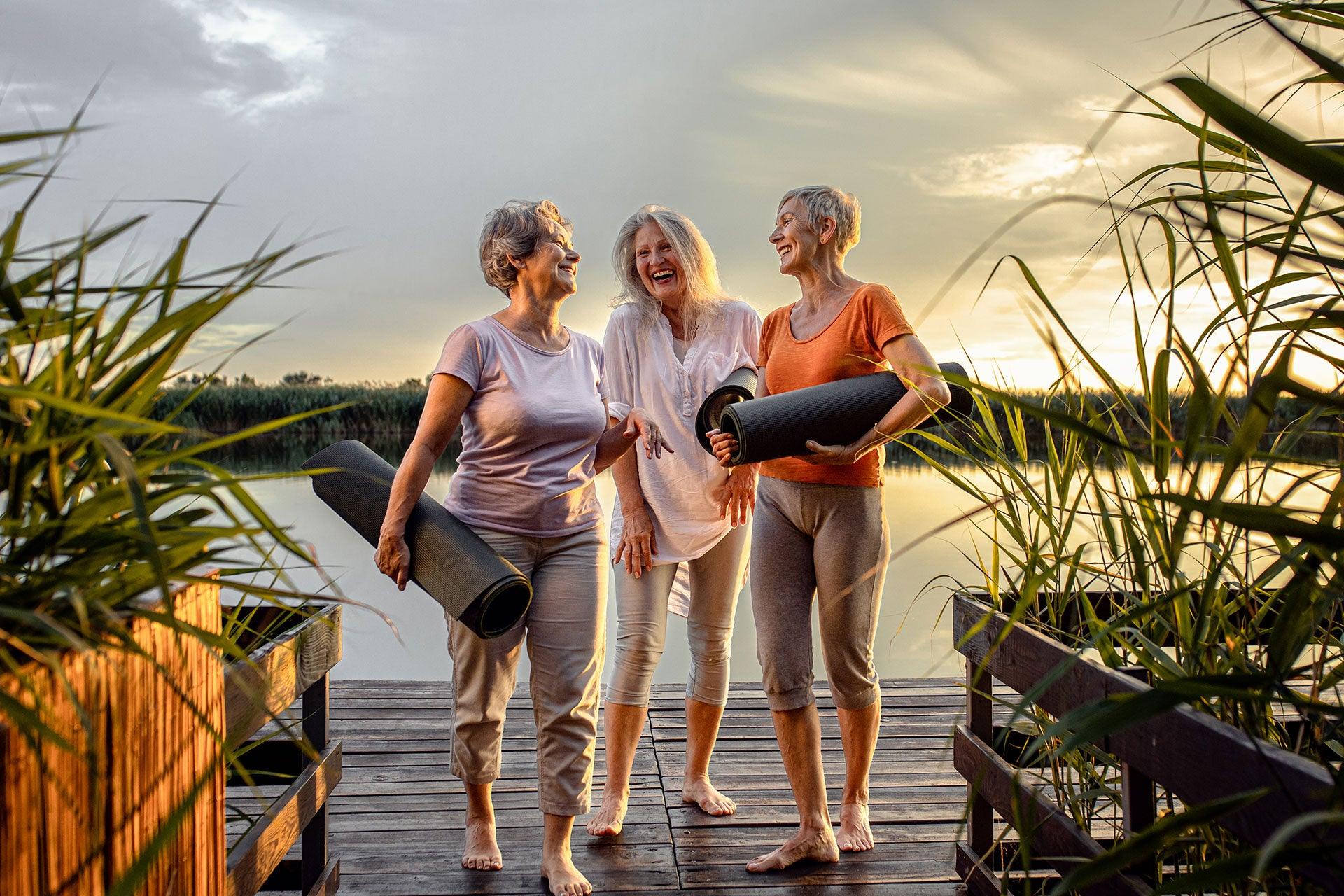As we age, staying active and maintaining our mental and physical health becomes increasingly important. Yoga is a gentle, low-impact exercise that offers numerous benefits for seniors, including improved strength, flexibility, balance, and mental well-being. Embracing a safe and accessible yoga practice for all ages can help seniors maintain their independence and overall quality of life.
Benefits of Yoga for Seniors
- Increased Flexibility: As we age, our muscles and joints naturally lose some of their flexibility. This can lead to stiffness, pain, and a limited range of motion. Practicing yoga regularly can help seniors maintain and even improve their flexibility, which can make everyday activities more comfortable and reduce the risk of injury.
- Improved Strength: Yoga is a weight-bearing exercise that helps to build muscle strength. This is particularly important for seniors, as muscle mass naturally decreases with age. A stronger body can help seniors maintain their independence, making it easier to perform daily activities like lifting, carrying, and climbing stairs.
- Better Balance: Many yoga poses require balance, which can be particularly beneficial for seniors. Improved balance can reduce the risk of falls, a common cause of injury among older adults.
- Enhanced Mental Well-being: Yoga is not just a physical practice but also a mental one. The focus on deep breathing and mindfulness can help seniors manage stress, improve mood, and foster a sense of inner peace and calm.
- Social Connection: Attending a yoga class can also provide an opportunity for seniors to connect with others and make new friends, which is essential for maintaining mental health and well-being as we age.
Tips for Embracing a Safe and Accessible Yoga Practice
Yoga can be an excellent way for seniors to stay active, improve their physical and mental health, and enhance their overall quality of life. By finding the right class, using props and modifications, and prioritizing safety, seniors can embrace a safe and accessible yoga practice for all ages.
- Consult with a Healthcare Provider: Before beginning any new exercise program, it’s essential to consult with a healthcare provider, especially if you have any pre-existing conditions or concerns. They can offer personalized advice on the type of yoga practice that’s best for your individual needs.
- Find the Right Class: There are many different styles of yoga, and some are more suitable for seniors than others. Look for classes specifically designed for older adults or those labeled as “gentle” or “restorative” yoga. These classes often focus on slow, gentle movements and poses that are easily modified to accommodate various abilities and limitations.
- Use Props and Modifications: Yoga props, such as blocks, straps, and bolsters, can help seniors modify poses to suit their needs and abilities. Using props can make poses more accessible and comfortable while still providing the benefits of the practice.
- Listen to Your Body: It’s essential for seniors to listen to their bodies and respect their limits. It’s okay to modify or skip poses that feel too challenging or uncomfortable. Remember that yoga is a personal practice, and the goal is to feel good in your body, not to push yourself beyond your limits.
- Prioritize Safety: Always prioritize safety when practicing yoga. Move slowly and mindfully, paying attention to proper alignment and technique. If you’re unsure about a pose, ask the instructor for guidance or assistance.
- Develop a Consistent: Practice Consistency is key to experiencing the full benefits of yoga. Aim to practice yoga at least two or three times a week to see improvements in strength, flexibility, and balance. As you become more comfortable with the practice, you may want to gradually increase the frequency or duration of your sessions.
- Be Patient: Yoga is a journey, and progress can sometimes be slow. Be patient with yourself as you learn new poses and techniques. Over time, you will likely notice improvements in your strength, flexibility, and overall well-being.
- Seek Guidance from Experienced Instructors: A knowledgeable and experienced yoga instructor can provide invaluable guidance for seniors. They can offer modifications, adjustments, and support to ensure that you are practicing safely and effectively. Don’t be afraid to ask questions or seek help from your instructor when needed.
- Consider Chair Yoga: For seniors with limited mobility or those who may have difficulty getting up and down from the floor, chair yoga can be a fantastic option. Chair yoga involves performing modified yoga poses while seated in a chair, providing support and stability while still offering many of the same benefits as a traditional yoga practice.
- Stay Hydrated: Proper hydration is essential for overall health and well-being, especially during exercise. Be sure to drink plenty of water before, during, and after your yoga practice to stay hydrated and support your body’s natural functions.
In conclusion, yoga can offer numerous benefits for seniors, promoting physical, mental, and emotional well-being. By embracing a safe and accessible yoga practice, seniors can enjoy an improved quality of life and maintain their independence as they age. Remember to consult with a healthcare provider before starting a new exercise program, find the right class and instructor, use props and modifications, and listen to your body to ensure a safe and enjoyable yoga experience for all ages.



